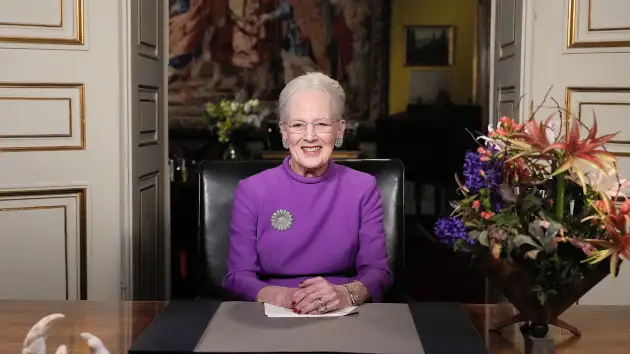It was during her traditional New Year’s speech that the Queen of Denmark, Margrethe II, announced on Sunday December 31st her intention to abdicate. “On January 14, 2024, fifty-two years after succeeding my beloved father (January 14, 1972), I will leave my post as Queen of Denmark. I will leave the throne to my son, Crown Prince Frederik,” she said during her televised wishes.
Unifying and popular, the sovereign, widowed since 2018, had undergone major back surgery in February which prevented her from appearing in public until April. “The operation (…) gave rise to reflections on the future, on the question of whether it was time to transfer responsibilities to the next generation,” confided the queen, 83 years old.
On Sunday January 14 the official ceremony took place where more than 100,000 people braved the cold to attend the event in Copenhagen, the Danish capital.
Before abdicating, the queen made her last official journey in her royal carriage. CLAUS BECH
A modern and inspiring story
On the throne since the death of her father Frederik IX on January 14, 1972, she was the first queen of Denmark (Margrethe I was only officially regent in the Middle Ages (1375-1412)). Margareth II, nicknamed “Daisy”, could have never become queen because the Constitution prohibited it until 1953. The throne couldn’t be occupied by a woman. To the detriment of his uncle Knud and his son, the law was then changed by referendum, under pressure from Danish governments concerned with modernity.
The former queen helped gradually modernize the monarchy. On the death of her distant cousin Elizabeth II, Margrethe became the only reigning queen in Europe. More than 80% of Danes identify as monarchists.
Much appreciated, she succeeded in being a queen who unified the Danish nation through many changes: globalization, the advent of a multicultural state, economic crises and the Covid-19 pandemic.
A significant day in the history of the Danish monarchy
After a final carriage tour through Copenhagen, Queen Margrethe II arrived at Christiansborg Palace. During a Council of State, she signed her act of abdication around 2 p.m., a first in 900 years in the Scandinavian kingdom, making her 55-year-old eldest son, heir to the throne. Queen Mary Frederik, king’s wife, is the first queen of the country not to be of noble origin.
The day’s protocol broadly reflects Denmark’s tradition of succession. No foreign dignitary is invited, and the sovereign, who does not wear a crown, literally does not ascend a throne. Unlike in the United Kingdom, there will be no coronation ceremony in Denmark. The new monarch, however, signs the laws and formally presides over the constitution of the government which he meets at regular intervals.
The royal couple greeted the crowd. FRANCEINFO
“It’s a responsibility that I assume with respect, pride and a lot of joy”, said Frederik X.










